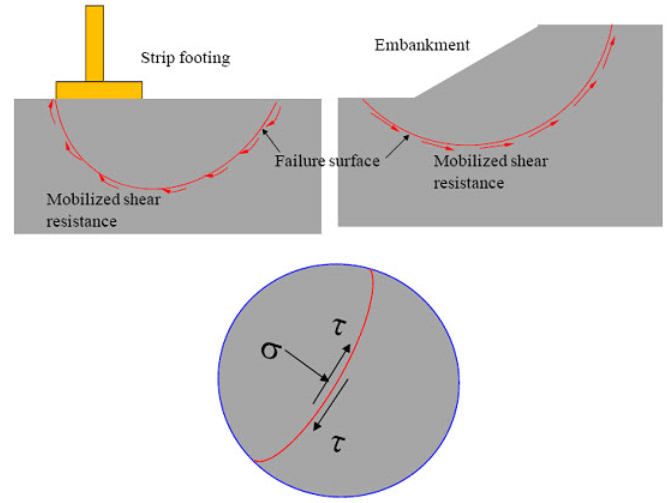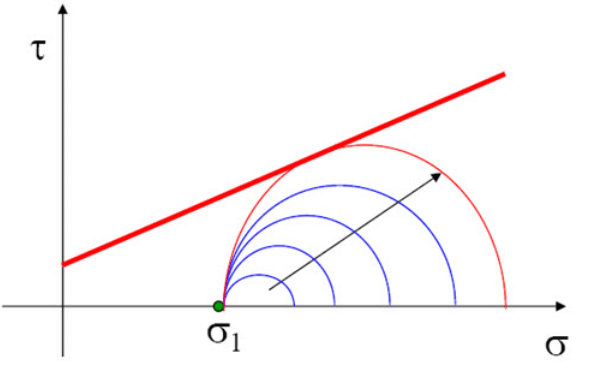Mohr-Coulomb Failure theory - Shear Strength of Soil, Soil Mechanics | Soil Mechanics Notes- Agricultural Engineering PDF Download
Mohr-Coulomb failure theory
Soil generally fails in shear. At the failure surface, shear stress reaches the shear strength (tf) of the soil. It the failure surface, sliding between the particles takes place as shown in Figure 10.1. The resistance that the soil offers during deformation is mainly due to the shear resistance between the particles at their contact points at the failure surface. No crushing of individual particle takes place. According to Mohr-Coulomb failure criterion, the shear strength of the soil can be expressed as:
 (10.1)
(10.1)
where c is the cohesion and Ø is the angle of internal friction of the soil. σ is the applied normal stress. The line satisfying the Eq. (10.1) is called the Mohr-Coulomb failure envelop (as shown in Figure 10.2 with red color). In Figure 10.2, it is shown that tf is the maximum stress soil can take without failure under an applied vertical stress σ (with blue color). Figure 10.3 shows the Mohr circle of two soil elements one at the failure surface (red color) and one at any other location (blue color). The Mohr circle touches the failure envelop incase of soil element taken from location of failure surface, whereas Mohr circle of the soil element taken from other than the location of failure surface is situated below the failure envelop. Keeping σ3 constant, if vertical stress (σ1) increases the Mohr Circle becomes larger and finally it will touch the failure envelop and failure will take place (as shown in Figure 10.4). Figure 10.5 shows the Mohr circle for total stress and effective stress condition. The Eq. (10.1) represents the shear strength in terms of total stress (σ). In terms of effective stress (σ' = σ - u), the shear strength of the soil can be expressed as:

where u is the pore water pressure.

Fig. 10.1. Failure surface and shear resistance.

Fig. 10.2. Mohr-Coulomb failure criterion and failure envelop.

Fig.10.3. Mohr circles of different soil elements

Fig. 10.4. Mohr circles for different stress condition

Fig. 10.5. Mohr circles for total stress and effective stress condition
FAQs on Mohr-Coulomb Failure theory - Shear Strength of Soil, Soil Mechanics - Soil Mechanics Notes- Agricultural Engineering
| 1. What is the Mohr-Coulomb failure theory? |  |
| 2. How is the shear strength of soil determined using the Mohr-Coulomb failure theory? |  |
| 3. What factors affect the shear strength of soil according to the Mohr-Coulomb failure theory? |  |
| 4. Is the Mohr-Coulomb failure theory applicable to all types of soils? |  |
| 5. How is the Mohr-Coulomb failure theory relevant in agricultural engineering? |  |





















